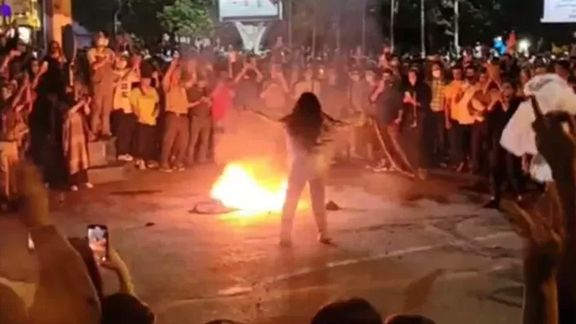Protests In Iran Spread, Putting Government In Quandary

Protests in Iran continued with ferocity on Wednesday, as unrest spread to more cities and locations within cities, complicating the task of security forces.

Protests in Iran continued with ferocity on Wednesday, as unrest spread to more cities and locations within cities, complicating the task of security forces.
The death toll began to rise with around ten confirmed civilian casualties, although military force has not been used nationwide as was the case in the bloody protests of November 2019.
Some believe the authorities were caught off guard and are preparing a fierce crackdown. But with the geographic spread of the protests and the determination seen on the part of a new generation of protesters, the use of military force can be extremely costly in human lives.
In large cities such as the capital Tehran, protests are no longer held just in the central areas, but they have mushroomed in multiple districts and suburbs. This would inevitably make a military response harder, but the regime also has its local forces in the form of Basij paramilitary, commanded by the Revolutionary Guard (IRGC).
Some of these local “thugs” as the people see them, have already tried to intervene in the protests by mixing up with the crowds and then grabbing a key figure from among the protesters and shoving him or her toward the police or anti-riot forces who then arrest the person.

There are multiple videos showing people attacking these elements once they are identified and beating them up. Protesters are also much more brazen than in past rounds of unrest, by advancing toward security forces with rocks and sticks and in many instances forcing them to retreat.
This creates a situation where only direct gunfire can stop protesters, who appear to be a mirror of society, with women having a major presence and even older people pitching in and helping the younger, front-line protesters.
The Islamic Republic has proven time and again that it would use military weapons against protesters. In November 2019, at least 1,500 unarmed people were killed in less than a week. Whether this time it would be willing to shed so much blood, is not clear yet.
Popular anger and frustration have increased since 2019 because of more social restrictions and unprecedented economic hardship triggered by United States’ sanctions. The killing of a 22-year-old woman in custody last week was all it took for pent-up anti-regime sentiments to boil over and lead to perhaps one of the biggest opposition challenges the clerical regime has ever faced.
Speaking of clerics, people on social media point out that they are nowhere to be seen, staying put at home to avoid angry protesters. Attacks and public insults against clerics in the streets had already increased even before the protests.
Some believe that the regime has held back on using military force because President Ebrahim Raisi is in New York for the United Nations General Assembly, and they do not want a public relations fiasco during his trip. He already carries the baggage of a human rights violator, having been a member of a death commission in 1988 that ordered the killing of up to 5,000 political prisoners serving their sentences.
It is also predictable that if the Islamic Republic resorts to military weapons and kills hundreds or thousands of people, it can damage chances of a nuclear deal with the United States, or at least make it harder for Tehran to try to get more concessions. Washington might also impose more sanctions for human rights violations in such a case.